Posted: April 6th, 2013 | No Comments »
Those of you who follow the sillier proclamations of the Chinese Communist Party will know that a while back they banned time travel. This does seem rather churlish, but no TV programmes involving time travel are allowed – and no imports of Dr Who, Life on Mars etc etc. Alternative realities and histories are not to be contemplated. What on earth are they afraid of (as if I didn’t know). Of course alternative history is all the rage elsewhere – British readers have been fascinatingly gobbling up alternative histories of Britain imagining having lost the war (see Peter Millar’s The Shameful Suicide of Winston Churchill or CJ Samson’s Dominion for example). The British state has not collapsed despite publication of these books and a new series of Dr Who!
Personally I like a bit of time travel. Interesting then that a good friend, Matt Forney, happened to be wandering around the old Fox Tower in Beijing recently (Dongbienmen) which of course has a central role in my Midnight in Peking in 1937. Matt took a close look at the supposedly old graffiti on the tower’s walls that is said to have been left by soldiers, Russians mostly, of the Eight Power Allied Army that stormed Peking, finished off the Boxers and then proceeded to loot the place. Some of the scratched names look a bit fresh and more recent which has called the whole 1900 graffiti concept into question but anyway…What should he find? Perhaps a bit of time travel is possible….
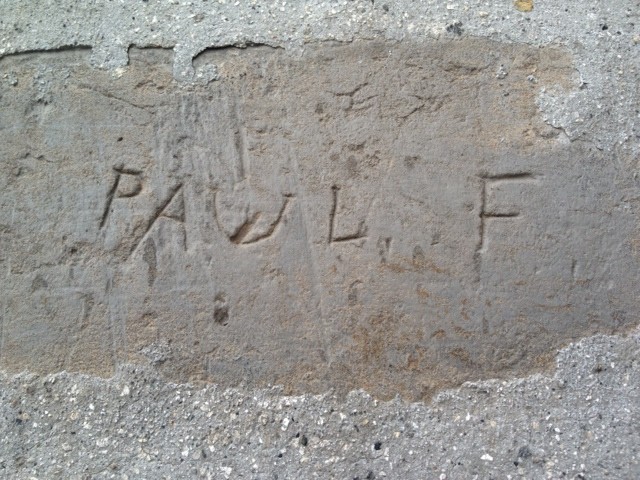
Posted: April 5th, 2013 | No Comments »
Somehow, along the way, as the world lost class, smokers started just leaving their fags in the packs. Of course back in the 1930s no self respecting smoker would have been without a rather nice cigarette case – Shanghailanders of course included. Where did they get them? Alexander Clark’s at Sassoon House at No.20 the Bund (basically the shopping arcade at the base of the Cathay Hotel) was one place….

Posted: April 5th, 2013 | No Comments »
Obviously, I think this an excellent choice for any book club…
RAS SHANGHAI BOOK CLUB
Saturday 6th April 2013 at 4:00 pm
T8 Restaurant
Xintiandi, North Block, Lane 181 Taicang Lu, near Madang Lu, 2/F
太仓路181å·, 新天地北里, 近马当路
 This is a special RAS Book Club Event-
PAUL FRENCH will discuss his new book:
  The Badlands: Decadent Playground of Old Peking
Published by: Penguin, 7 Jan 2013, 84 pages
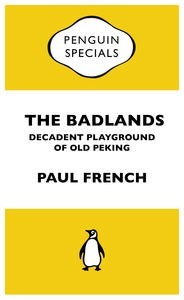
BADLANDS is an evocative account by Paul French, author of the acclaimed Midnight in Peking, of the infamous nightlife district of pre-communist Beijing.
Through portraits of eight White Russians, Americans and Europeans who lived and worked in the Badlands in the 1920s and ’30s, Paul French brings the area and its era vividly to life. A small warren of narrow hutongs, the Badlands sat just inside the eastern flank of the Tartar Wall, which at that time enclosed the old Imperial City of Peking.
The Badland’s habitués were a mix of the good, the bad and the poor unfortunates, among them the fiery brothel madams Brana Shazker and Rosie Gerbert; the pimp Saxsen, who had no regard for the women he exploited; the young prostitutes Marie and Peggy, whose dreadful working lives drove them into separate pits of madness and addiction. There was the cabaret dancer Tatiana Korovina, a White Russian girl who did not succumb to the vice of the district but instead married, had a family, and eventually left China to lead a long and happy life. There was the American Joe Knauf, who dealt violence and fear as well as drugs, and finally the enigmatic Shura Giraldi, of indeterminate sex, who was to some a charmer and to others a master criminal, but to everyone the uncrowned King of the Badlands.
In depicting this colourful cast of characters, Paul French was assisted by readers of the extraordinary Midnight in Peking, who contacted him from around the globe. As the family and acquaintances of people he’d written about in that book, they had stories and recollections to add to French’s own research. The result is a short but potent account of a time and a place until now largely forgotten, but here rendered unforgettable.
Born in London and educated there and in Glasgow, Paul French has lived and worked in Shanghai for many years. He is a widely published analyst and commentator on China and has written a number of books, including a history of foreign correspondents in China and a biography of the legendary Shanghai adman, journalist and adventurer Carl Crow.
His book Midnight in Peking was a New York Times Bestseller, a BBC Radio 4 Book of the Week, and will be made into an international miniseries by Kudos Film and Television, the UK creators of Spooks and Life on Mars.
Copies of the book will be for sale and signed by the author on request
Entrance: RMBÂ 100 (RAS Members) and RMB 150 (non-members) including a drink (tea, coffee, soft drink, or glass of wine). Those unable to make the donation but wishing to attend may contact us for exemption prior to this RAS Book Club event.
Membership applications and membership renewals will be available at this event.
RSVP: bookclub@royalasiaticsociety.org.cn
N.B. RESERVATIONS ESSENTIAL AS SPACE IS LIMITED AT THIS EVENT!
Posted: April 4th, 2013 | No Comments »
Only a few days left to catch this exhibition in Beijing I’m afraid (I really must sharpen my pencil in terms of giving more notice of things!!). There is a display of interesting photos display at the J.W. Marriott in Beijing, organised by the British Embassy.The exhibition, ‘Picturing China 1870-1950: Photographs from British collections’, or until 7th April.
More here from the Visualising China blog
For those interested in China photography and archiving Robert Bickers, the man behind the Visualising China project is speaking at the Translating China: Britain in China – Archiving conference on April 27th at the University of Westminster.
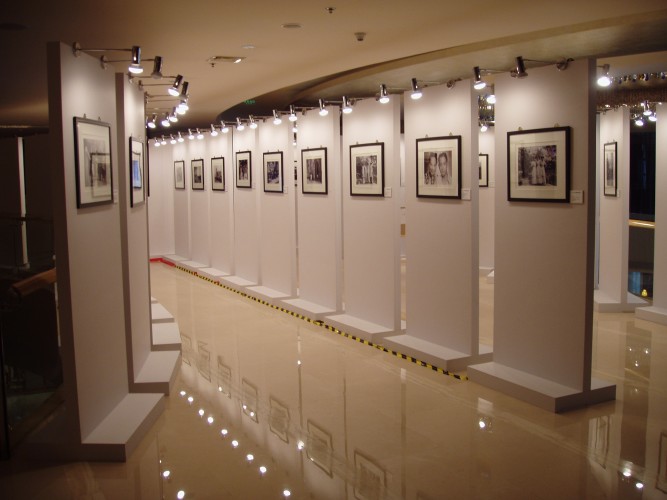
Posted: April 4th, 2013 | 2 Comments »
Well, the Catholics got a new Pope. And, the Chinese decided to not really report it all….Wonder how the old Catholic Review would have reported it all to Shanghailanders? Here’s their old letter head – based down on Rue Consulate (now Jingling Road) in the French Concession.

Posted: April 3rd, 2013 | No Comments »
A new series of events (sorry, I’m a bit late plugging the first one) in London – Thursday Night Salons: Contemporary Chinese Art and Culture – look interesting. Not least because there’s a good dose of Taiwanese culture to counter the tsunami of PRC-related stuff around (good and, very often, bad). Anything that raises awareness of Taiwan is all right with me. Anyway, these sessions are aimed at aca’s and wanna-be aca’s but I think anyone can go along and I’m sure that they accept that some of us who aren’t academics do know the odd thing or two.
so here’s what they got:
April 4 – Chen Pin-Chuan on a critical history of Taiwanese documentary and some stuff on the Taiwanese avant garde in the 1980s/90s
April 18th – Chou Yu-ling on the films of Chen Chieh-Jen (Taiwanese) and Hou Hsiao-hsien (Taiwanese too)
May 2nd – Emily Williams on the 1976 Huxian Peasant Painting Exhibition and the influence of Mexican Modernism on Chinese art (admittedly that’s a bit out there, but interesting)
May 16th – Ros Holmes on the Pillars of Fat stuff and Rachel Marsden on the changing nature of Chinese contemporary art
To find to more send an email to thursdaynightsalon@gmail.com
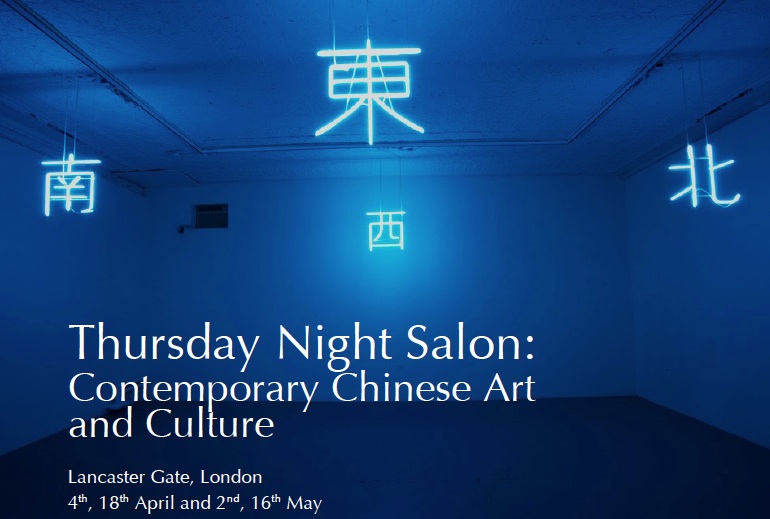
Posted: April 3rd, 2013 | No Comments »
Just quickly to note to everyone who likes Jane Gardam’s recreations of 1960s Hong Kong in Old Filth and The Man in the Wooden Hat – Old Filth QC is back, in Last Friends, to battle his rival, the nasty little Veneering one more time…(and if that means nothing to you then go back to Old Filth and start at the start of the trilogy)…
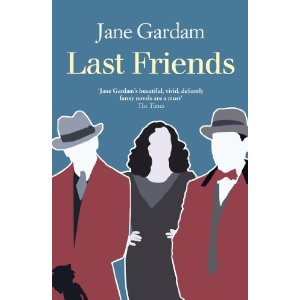
Posted: April 2nd, 2013 | No Comments »
I’m doing a Book Club for the Royal Asiatic Society’s Shanghai branch on my new Badlands e-book and limited edition hardback….if you’re in Shanghai….
Saturday 6th April 2013 at 4:00 pm
T8 Restaurant
Xintiandi, North Block, Lane 181 Taicang Lu, near Madang Lu, 2/F
 This is a special RAS Book Club Event
PAUL FRENCH will discuss his new book:
  The Badlands: Decadent Playground of Old Peking
Published by: Penguin, 7 Jan 2013, 84 pages
   
BADLANDS is an evocative account by Paul French, author of the acclaimed Midnight in Peking, of the infamous nightlife district of pre-communist Beijing.
Through portraits of eight White Russians, Americans and Europeans who lived and worked in the Badlands in the 1920s and ’30s, Paul French brings the area and its era vividly to life. A small warren of narrow hutongs, the Badlands sat just inside the eastern flank of the Tartar Wall, which at that time enclosed the old Imperial City of Peking.
The Badland’s habitués were a mix of the good, the bad and the poor unfortunates, among them the fiery brothel madams Brana Shazker and Rosie Gerbert; the pimp Saxsen, who had no regard for the women he exploited; the young prostitutes Marie and Peggy, whose dreadful working lives drove them into separate pits of madness and addiction. There was the cabaret dancer Tatiana Korovina, a White Russian girl who did not succumb to the vice of the district but instead married, had a family, and eventually left China to lead a long and happy life. There was the American Joe Knauf, who dealt violence and fear as well as drugs, and finally the enigmatic Shura Giraldi, of indeterminate sex, who was to some a charmer and to others a master criminal, but to everyone the uncrowned King of the Badlands.
In depicting this colourful cast of characters, Paul French was assisted by readers of the extraordinary Midnight in Peking, who contacted him from around the globe. As the family and acquaintances of people he’d written about in that book, they had stories and recollections to add to French’s own research. The result is a short but potent account of a time and a place until now largely forgotten, but here rendered unforgettable.
Born in London and educated there and in Glasgow, Paul French has lived and worked in Shanghai for many years. He is a widely published analyst and commentator on China and has written a number of books, including a history of foreign correspondents in China and a biography of the legendary Shanghai adman, journalist and adventurer Carl Crow.
His book Midnight in Peking was a New York Times Bestseller, a BBC Radio 4 Book of the Week, and will be made into an international miniseries by Kudos Film and Television, the UK creators of Spooks and Life on Mars.
Copies of the book will be for sale and signed by the author on request.
Entrance: RMBÂ 100 (RAS Members) and RMB 150 (non-members) including a drink (tea, coffee, soft drink, or glass of wine). Those unable to make the donation but wishing to attend may contact us for exemption prior to this RAS Book Club event.
Membership applications and membership renewals will be available at this event.
RSVP: bookclub@royalasiaticsociety.org.cn
N.B. RESERVATIONS ESSENTIAL AS SPACE IS LIMITED AT THIS EVENT!







